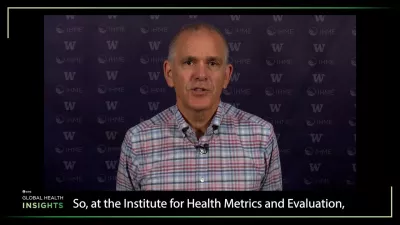Read the research
This transcript has been lightly edited for clarity
So at the Institute for Health Metrics and Evaluation, with the University of Oxford, several years ago, we initiated a project called GRAM. And the product of that first analysis from GRAM was the first-ever quantification of the global burden of antimicrobial resistance. We published this now nearly two and a half years ago and found that AMR was a huge global problem that was similar in magnitude, depending on how you think about counting it, all the deaths where a drug-resistant infection is present versus whether or not drug-resistance changed the outcome.
But either way, it’s a really large problem. It is larger than some of the classic global health priorities, such as tuberculosis or malaria or even HIV.
So after having undertaken the global analyses that we published in The Lancet, we have been continuing a series of publications region by region. The most recent analysis is for the Americas, where we’re digging into the data that’s available country by country in the Americas to show how the pattern of AMR differs by location.
That’s important for developing national action plans. We’re also taking the research on AMR and looking more carefully by age. And so right now, one of the priorities is to look at is AMR in children. There are some data sources such as the CHAMPS data store network and analysis, and others, that can feed into the understanding of AMR in the neonatal period and late neonatal in early childhood.
This matters a lot because the patterns are different in children, as you might expect, than they are in adults. And that’s another area of work that is soon to be published and released.
We’re continuing this work with support and, jointly again, with the University of Oxford, to try to analyze the time trends in antimicrobial resistance, because depending on the drug and bug combinations, we really need to know which ones are getting worse and in which regions, because one of the findings from our first round of studies was that the pattern of AMR is different country by country, region by region.
And as we start to dig into the data on time trends, we’re seeing that the trends are different in different parts of the world. So we’re very excited that sometime in the not too distant future we’ll be able to start reporting on these time trends. What does the data tell us about which drug-bug combinations are getting worse and which ones may actually not be getting worse at the same rate?
In terms of the solutions for AMR, we don’t need our further quantification to have the world pay attention to the solutions. We need a more robust pipeline for new antibiotics. We need to have more thoughtful and careful stewardship of the existing antibiotics that we have. We need to explore and understand the links to One Health – the use of antibiotics in animals is an example of that.
And then there’s a myriad set of interventions that can influence how often we have infections and therefore also how often you have drug-resistant infections, basic things like improved water or sanitation, reduced air pollution, and a number of factors that will just reduce the general rates of infections and a number of the infectious syndromes that we track as part of this AMR work – you know, pneumonias, diarrheas, abdominal infections, urinary tract infections.
All of these are pathways through which infection and drug-resistant infection can have an impact on health outcomes. I think for us at IHME, as the sort of caretakers of the Global Burden of Disease collaboration, what’s important about AMR is it’s sort of a new way or a new dimension of thinking about the burden of disease. It is a phenomenon that affects many types of infectious syndrome.
It’s quite complex because of the drug-bug combinations, and the solutions will also be reasonably complicated as we think about the future. But it’s very important from our point of view to keep quantifying its impact – bring this down to the local level and also, by having time trend data, to be able to say what we think is going to happen in the future.
The Lord O’Neill report sort of sounded the alarm about the potential magnitude of AMR in the future. And we really want to put that sort of forecasting of AMR into the future on a firm basis by understanding the time trends and hopefully advocate, or have others use these quantifications to advocate, for the policies that can mitigate the impact in the future.

